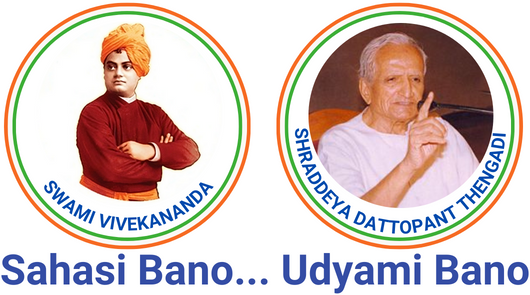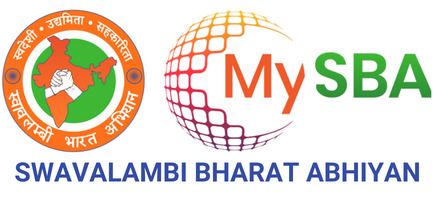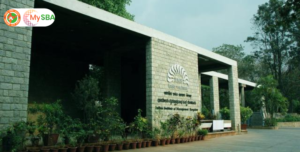The PMEGP (Prime Minister’s Employment Generation Programme) is a new credit-linked subsidy programme that was approved for implementation by the Indian government in August 2008. The Prime Minister’s Rozgar Yojana (PMRY) and the Rural Employment Generation Programme (REGP) were combined to create the PMEGP scheme, which was introduced by the Ministry of Micro, Small, and Medium Enterprises. This was done primarily to provide rural and urban communities with non-farm employment options.
A recipient of this programme contributes 5–10% of the total investment, and the government matches it with a 15–35% subsidy, depending on the applicant’s eligibility. Implementing the PMEGP scheme at the state level is the responsibility of state KVIC (Khadi and Village Industries Commission) Directorates, District Industries Centres (DICs), State Khadi and Village Industries Boards (KVIBs), and banks. Government grants may be routed through specific banks by the KVIC for later distribution into the bank accounts of recipients or entrepreneurs.
OBJECTIVES OF THE PMEGP SCHEME
The Prime Minister’s Employment Generation Programme (PMEGP) is a credit-linked subsidy program launched by the Government of India to promote self-employment and entrepreneurship opportunities in rural and urban areas. The primary objectives of the PMEGP scheme are as follows:
- Generate Employment: The main goal of PMEGP is to create sustainable employment opportunities for unemployed youth and other aspiring entrepreneurs. It aims to reduce unemployment and underemployment by encouraging individuals to start their own enterprises.
- Promote Entrepreneurship: PMEGP encourages the spirit of entrepreneurship by providing financial assistance and support to individuals who want to set up their own micro or small enterprises. This helps in fostering a culture of self-reliance and self-employment.
- Support Micro and Small Enterprises: The scheme targets the development of micro and small enterprises in both rural and urban areas. It provides financial assistance to help these enterprises establish and grow, contributing to economic development at the grassroots level.
- Encourage Traditional and Rural Industries: PMEGP emphasizes the promotion of traditional and rural industries. It aims to revitalize and strengthen traditional crafts, skills, and industries, preserving cultural heritage and generating income in rural areas.
- Reduce Regional Disparities: By extending its reach to both rural and urban areas, PMEGP seeks to reduce regional disparities in economic development. It helps promote economic activities in backward and less-developed regions of the country.
- Financial Inclusion: PMEGP encourages financial inclusion by providing credit-linked subsidies to entrepreneurs who may not have access to traditional financing. This enables individuals from diverse backgrounds to start and expand their businesses.
- Sustainable Development: The scheme promotes sustainable development by encouraging environmentally friendly and socially responsible business practices. It supports projects that have a positive impact on the environment and society.
- Empower Women and Marginalized Sections: PMEGP actively promotes the participation of women, scheduled castes, scheduled tribes, and other marginalized sections of society in entrepreneurship. It aims to empower these groups by providing them with equal opportunities.
- Skill Development: The scheme may include skill development and training programs to enhance the capabilities of entrepreneurs. This ensures that they are better equipped to manage and grow their businesses successfully.
- Economic Growth: Ultimately, PMEGP contributes to overall economic growth and development by fostering a vibrant small and micro-enterprise sector. This sector plays a vital role in job creation, income generation, and poverty reduction.
To achieve these objectives, PMEGP provides financial assistance in the form of subsidies and bank loans to eligible entrepreneurs for setting up and running their businesses. The scheme is administered at the national, state, and district levels to ensure effective implementation and reach its intended beneficiaries.
SUBSIDY UNDER PMEGP SCHEME
The Prime Minister’s Employment Generation Programme (PMEGP) provides a subsidy to eligible entrepreneurs to support the establishment and growth of their micro and small enterprises. The subsidy is a crucial component of the scheme and aims to make entrepreneurship more accessible and financially viable. Here are the key details about the subsidy under the PMEGP scheme:
- Nature of Subsidy: The subsidy provided under PMEGP is a capital subsidy, which means it is intended to cover a portion of the project cost or the capital investment required to start the enterprise.
- Subsidy Amount: The amount of subsidy provided varies depending on the category of the entrepreneur and the location of the project (urban or rural). As of my last knowledge update in September 2021, the subsidy rates were as follows:
- General Category Entrepreneurs: In rural areas, the subsidy was typically 25% of the project cost, while in urban areas, it was 15% of the project cost.
- Special Category Entrepreneurs (SC/ST/OBC/Minorities/Women/Ex-Servicemen/Physically Handicapped/NER/NH Region): In rural areas, the subsidy for special category entrepreneurs was generally 35% of the project cost, and in urban areas, it was 25% of the project cost.
- Maximum Subsidy Amount: There is a maximum limit on the subsidy amount that can be availed by an entrepreneur. This maximum limit varies based on the project cost, category of the entrepreneur, and the location of the project. The maximum subsidy amount can change over time as per the scheme’s guidelines.
- Loan Component: The subsidy under PMEGP is linked to bank loans. Entrepreneurs are required to secure a loan from a recognized financial institution or bank for the remaining portion of the project cost (i.e., the cost not covered by the subsidy). The loan amount is generally higher than the subsidy amount.
- Beneficiary Contribution: Entrepreneurs are also required to contribute a certain percentage of the project cost from their own resources. This contribution is typically higher for general category entrepreneurs compared to special category entrepreneurs.
- Repayment of Loan: The loan component of the project is repayable by the entrepreneur to the bank as per the terms and conditions of the loan agreement. The subsidy, on the other hand, does not need to be repaid.
- Monitoring and Disbursement: The subsidy is disbursed to the entrepreneur’s bank account after the project is approved, and the enterprise is established. Proper monitoring mechanisms are in place to ensure that the funds are used for the intended purpose.
- Project Appraisal: The project proposal submitted by the entrepreneur is appraised by the implementing agencies at the district, state, and national levels to determine its viability and eligibility for the subsidy.
It’s important to note that the specific details of the PMEGP scheme, including subsidy rates and maximum limits, may change over time as per government policies and guidelines. Therefore, it is advisable for potential beneficiaries to check the latest information and guidelines provided by the implementing agencies and the Ministry of Micro, Small, and Medium Enterprises (MSMEs) or relevant government authorities.
ELIGIBILITY CRITERIA FOR PMEGP LOAN
The eligibility criteria for obtaining a loan under the Prime Minister’s Employment Generation Programme (PMEGP) in India are designed to ensure that the benefits of the program reach aspiring entrepreneurs who genuinely need support to establish and run their micro and small enterprises. The eligibility criteria can vary slightly from state to state and may be subject to changes over time. As of my last knowledge update in September 2021, here are the general eligibility criteria for PMEGP loans:
- Age Limit: There is typically no specific age limit for individuals to apply for a PMEGP loan. However, most beneficiaries are expected to be of working age.
- Citizenship: The applicant must be a citizen of India.
- Educational Qualification: There is usually no minimum educational qualification required to apply for PMEGP assistance. People with varying levels of education, including those with minimal formal education, can apply.
- Category of Entrepreneur: PMEGP is open to individuals from different categories, including:
- General Category: This includes individuals who do not fall under any special category like SC, ST, OBC, minorities, women, ex-servicemen, or persons with disabilities.
- Special Category: This includes individuals belonging to categories such as Scheduled Castes (SC), Scheduled Tribes (ST), Other Backward Classes (OBC), minorities, women, ex-servicemen, persons with disabilities (PwD), and beneficiaries from the North Eastern Region (NER) and hilly areas (NH).
- Location: The PMEGP scheme is available for entrepreneurs intending to establish their enterprises in both rural and urban areas.
- Project Type: The project for which the loan is sought should fall under the permissible activities or sectors as specified by the PMEGP guidelines. The project should also be considered economically viable and feasible.
- Group or Individual: PMEGP loans can be availed by individuals as well as groups, including self-help groups (SHGs). Group projects may have different eligibility criteria.
- Income Limit: There is often an income limit for eligibility, which may vary depending on the category of the entrepreneur and the location (urban or rural). Income limits are typically higher for special category entrepreneurs.
- Participation in Entrepreneurship Development Programs (EDPs): In some cases, applicants may be required to complete Entrepreneurship Development Programs (EDPs) or training programs as specified by the implementing agencies.
- No Default History: Applicants should not have a history of defaulting on loans provided by banks or financial institutions.
- Margin Money: Beneficiaries may be required to contribute a certain percentage of the project cost from their own resources as margin money. This contribution can vary based on the project cost and category of the entrepreneur.
- Loan Repayment Capacity: Applicants should demonstrate their ability to repay the loan by preparing a viable project report and business plan.
It’s important to note that the eligibility criteria may be subject to change, and specific details may vary based on the guidelines issued by the implementing agencies and the state government. Therefore, individuals interested in applying for a PMEGP loan should check the latest eligibility criteria and guidelines provided by the relevant authorities or visit the official PMEGP portal for the most up-to-date information.
DOCUMENTS REQUIRED FOR PMEGP LOAN
The necessary paperwork for PMEGP loans is listed below to ensure a smooth application process:
• In the event of special categories, a competent authority issues a certified copy of the caste or community certificate or any other pertinent document.
• All borrower Know Your Customer (KYC) documents, such as Aadhaar, PAN, EPIC, etc., for information entered into the PMEGP e-portal.
• A certified copy of the institutions’ bylaws must be included with the margin money (subsidy) claim, if at all possible.
• The Regional Office or the Controller of the Bank’s Branch must give their approval for projects costing more than Rs. 5 lakh that do not call for working capital. A certified copy of this approval from the Regional Office or Controller must be included with any subsidy claims.
HOW TO APPLY FOR A PMEGP LOAN ONLINE?
Applications and project proposals from potential beneficiaries are requested in order to develop a service unit or establish a business under the PMEGP. The State/Divisional Directors of KVIC publish local advertising in print and electronic media that invite applications after consulting with KVIB and the appropriate state’s Director of Industries (for DICs).
Beneficiaries can also apply for a PMEGP loan online at their official website.
Step 1: Completing the online PMEGP application by following the instructions and entering all necessary data.
Step 2: After providing all the necessary details, click “Save Applicant Data” to store the finished information.
Step 3: After backing up your information, you can upload all of the supporting materials to complete and submit the application form.
Step 4: A password and application ID number are given to the provided email address in preparation for future use.
A PMEGP loan application can also be submitted offline. From their official website, you may print off an application that you can complete out and submit to the appropriate office together with the Detailed Project Report and other necessary paperwork.
HOW TO CHECK THE APPLICATION STATUS FOR PMEGP SCHEME?
You must go to the Khadi & Village Industries Commission’s official website and take the steps listed below in order to verify the status of your PMEGP online application.
- Step 1: Select “PMEGP”. Once you’ve been led to a new page, choose ‘PMEGP PORTAL’ from the list of two choices.
- Step 2: Login Form for Registered Applicant” should be selected. Click “Login” after entering your “User ID” and “Password”.
- Step3 : select “View Status” to view the status of your PMEGP application.
Hopefully, the foregoing explanation of the PMEGP Scheme has given you a thorough understanding of its advantages and eligibility requirements. You can now quickly follow the application process to benefit from this program’s perks.
FREQUENTLY ASK QUESTIONS
- Are PMEGP loans available from regional rural banks?
The answer is that Regional Rural Banks can offer PMEGP loans.
- To apply for a loan through the Prime Minister’s Employment Generation Programme, do applicants need to offer collateral or any sort of third-party guarantee?
No, to apply for a loan through the Prime Minister’s Employment Generation Programme, applicants are not required to offer collateral or any kind of third-party guarantee.
- Do all PGEMP recipients have to attend the training?
Yes, all recipients are required to attend training for two weeks.






